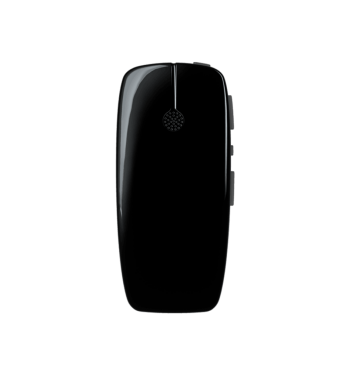Hearing Impaired Students Learning Schooling Challenges
Listening conditions in classrooms can be at times very challenging for students with normal hearing and students with hearing difficulties. But students with hearing loss will face more difficulties to cope up with the classroom environment specially when considering the constant ambient noise, multiple sources of speech at one time, distance from teachers and on top of that, reduced hearing capabilities. Therefore, providing special and innovative hearing solutions is a key for hearing impaired students for knowledge development and skills advancement.

Can’t hearing aids help?
Hearing aids are crucial and important to hearing impaired students and offer great benefits to wearers. Unfortunately, those benefit can be limited specially when the surrounding and background noise increases. As such the sound signal reaching the hearing aid microphones will be poor and unclear.

Background Noise!
Background noise in classrooms is another factor that makes it harder for hearing impaired students to understand what is being said. Background noise in classroom is a mixture of external noise like traffic, playgrounds,
corridors and adjacent classrooms, and internal classroom noise coming from classroom equipments, and noise from the movement and activity of other students in the classroom.

Reverberation, the hidden element
Reverberation is the reflection of sound from room surfaces. The amount of reverberation in a room depends on the room’s design, construction and furnishings. Rooms with hard walls, high
ceilings, bare windows and uncarpeted floors reverberate sounds considerably more than rooms with carpeted floors and soft furnishings. In rooms with high reverberation, sound bounces around the hard surfaces for longer, and this increases the background noise level.

Distance
The distance between teacher and student directly affects the level of the teacher’s voice reaching the student. The further away the student is from the teacher, the softer the teacher’s voice will sound.
Signal-to-Noise ratios
The signal-to-noise (SNR) ratio is the difference between the intensity of the signal and the intensity of the background noise. Noise, distance and reverberation can all decrease the SNR experienced by a student in the classroom, making it harder to understand what is said.
For a student to hear well, the teacher’s voice should be about 15 to 20 decibels (dB) louder than the background noise – a SNR of 15 to 20 dB.

In a typical classroom, the level of background noise is usually about 60 dB, while the average teacher’s voice measures around 70 dB at a distance of two metres. A student sitting two metres from the teacher will receive a SNR of 10 dB. This may not be enough for a student with hearing loss to hear well.
To improve the SNR, the teacher could try speaking in a louder voice all day long, but this is very difficult to maintain and can cause voice strain. Reducing the level of background noise and reverberation will also improve the SNR. But, as noted earlier, this can be hard to achieve and may still not be enough for a student with hearing loss.

Multi Microphone
InnoHear Solutions for School Students
Hearing Assistive Technologies (HATs) have been providing a great improvements for SNR by placing the microphone closer to the speaker, in this case the classroom teacher then sending the sound signal to the student’s hearing aids directly. Thus, speech perception and discrimination, speech comprehension and understanding at distance and interaction in the classroom environment is significantly enhanced.
with InnoHear’s latest Multi Microphone products, school students will have an affordable, easy and worry-free learning tool. No more bulky FM systems with tiny components that are hard to trace if misplaced and the famous syncing problems which causes connection with hearing aid to be unstable and frequently dropped down. The Multi microphone is a small but noticeable gadget that can transfer up to 2 megabit/second data and offers a reliable connectivity to the hearing aids via it’s stable 2.4 GHz wireless signal with 20 milliseconds delay in data streaming. It’s so simple to connect and so convenient to move from one classroom to another compared to the bulky FM systems.

One Solution for Better Learning Outcomes
Improving Signal-to-noise Ratio (SNR)
Our Multi Mic on average provides 15dB of SNR benefit above what directionality provides. It provides a significantly better speech
intelligibility compared to the existing Mini Mic. Also, it delivers as good speech intelligibility as the best external microphones in the industry.
How it works?

The multi microphone has two microphones to cater for the variable listening scenarios within a classroom (a) directional microphones offers a better SNR in challenging listening situations and (b) omnidirectional mode for small group work.
The multi microphone has an extended hearing range of up to 80 feet.
The battery can run for 11 hours on a single charge.
The Multi Microphone will automatically mute if dropped from heights of 30 inches and above thanks to the built in sensors to detect such drops to prevent hearing aids wearers from any loud sounds impact.
The Multi Microphone does not require any intermediary device or hardware and streams the signal of interest directly to the hearing instruments, offering a truly wireless solution.
Unlimited number of hearing aids can be connected to one multi microphone at one time for cost saving and convenient.
Compatibility with HATs from other manufacturers such as FM systems, digitally modulated (DM) wireless remote microphone systems, cochlear implants (CIs) and Bone-Anchored Hearing Aids (BAHAs)
Multi Microphone System options:
ReSound LiNX Quattro

Multi Microphone

ReSound ENZO Q

Multi Microphone

Interton Ready
Multi Microphone


